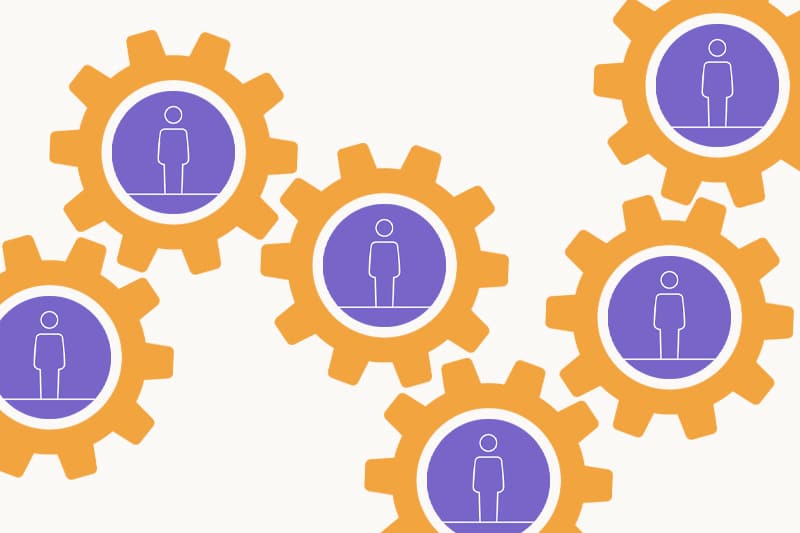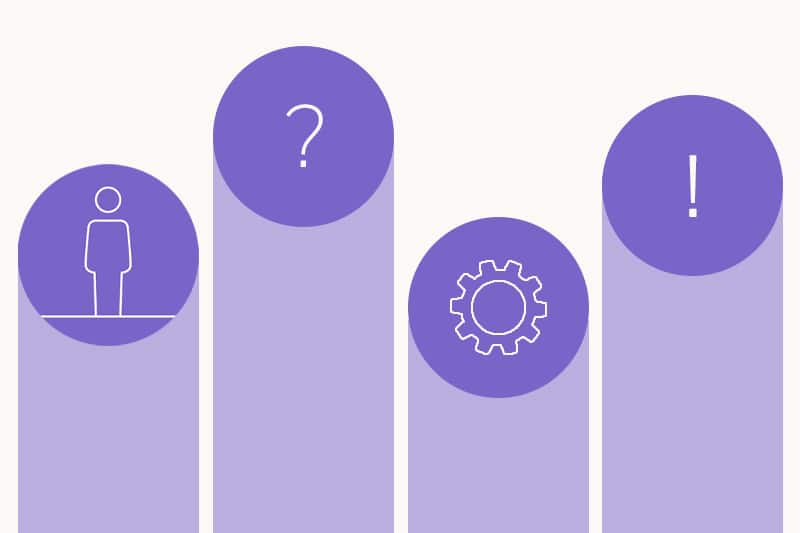Need help implementing your CX goals?
Our industry knowledge and experience are at your service. Contact CX by Design for a free 30-minute session and take the first step towards a thriving future!

edit Diana Sonis
event 04/05/2024
pace 4 mins
In our last article, we said that CX and UX follow the principles of human-centered design (HCD). You’ve probably heard quite a lot about businesses “being human-centric” or “taking a human-centered approach”. Often, this is used in conjunction with (or interchangeably with) mentions of “design thinking”.
Why all this emphasis on design? And what does HCD have to do with CX? We’ll detangle all the terms in this article. In our next article, we’ll explain how human-centered design can help solve business challenges.
Human-centered design is much broader in definition than visual design, information design, or any other “design” field. The “design” part of HCD refers to re-arranging business processes, teams, and often systems around the humans they serve. It’s important to note that humans in this context could be the customers who buy products or services, the users who use products/services, or the employees who are involved in any part of the process.
Traditionally, businesses have put themselves and their thoughts at the center of their decisions. This isn’t wrong, but it tends to deprioritize the experience of the humans carrying out the projects, running the machinery, and buying the goods produced.
This isn’t done maliciously. It’s usually just an oversight: decision-makers often believe that customers (and employees) have similar knowledge and preferences as the decision-makers do.

That’s why Harvard Business School defines human-centered design as “a problem-solving technique that puts real people at the center of the development process, enabling you to create products and services that resonate and are tailored to your audience’s needs. The goal is to keep users’ wants, pain points, and preferences front of mind during every phase of the process.”
Although different organizations may include different details in their definitions of HCD, all human-centered design projects follow the same general principles:

We can further distill this into the 4 pillars of human-centered design:
Because designs that look great on paper don’t always work as expected in the real world.
It’s easy to create a perfect system – in theory. But, when this system is put into production, a mountain of unforeseen challenges accrues. Why?
The root cause is that the people who design systems are rarely the same people who use them. This is summarized in the “golden rule” of UX: You are not your user.

Experts can design beautiful tools, systems, and processes, but they often lose their beginner mindset. They’ve absorbed so much knowledge about their systems that they can overlook actions that the average user might need to know. If these unnoticed actions aren’t included in the process, it can make it very hard for non-expert users to do the same task.
For example, imagine explaining the concept of unlocking a door to a person who has never seen this done before. For us, “unlock and open the door” is a single action. But our person needs to understand what a door is, where the door handle is, what the handle does, what a key is, what a lock is, how the key fits into the lock, how to turn the key, when to twist the door handle, when to pull the door open, and so on. If our person misses just one piece of this information, they can’t open the door.
This is why the beginner mindset is so important – it’s all too easy to miss something. If we lose sight of the humans at the center of the process, we risk making their experience unnecessarily difficult.
Human-centered design and design thinking are often used synonymously. And they have much in common. According to the Interaction Design Foundation, design thinking is “a non-linear, iterative process that teams use to understand users, challenge assumptions, redefine problems, and create innovative solutions to prototype and test. It is most useful to tackle ill-defined or unknown problems and involves five phases: Empathize, Define, Ideate, Prototype, and Test.”
So, what’s the difference? Design thinking is just one framework that’s used in HCD. There are many other frameworks and methodologies that you can choose to suit the needs of various projects, including:
It’s also common to use HCD in conjunction with Agile, Scrum, and other project management frameworks.
The connection between human-centered design and CX is simple: CX is a human-centric field. CX practitioners use HCD principles and related frameworks to solve business problems. Most importantly, CXers lead with the needs of internal and external customers.
Now that we know CX, UX, and HCD, let’s get real with them: how are organizations using these tools to improve their business? That’s what we’ll discuss in our next article.
Our industry knowledge and experience are at your service. Contact CX by Design for a free 30-minute session and take the first step towards a thriving future!

Want to help your company thrive using the principles of human-centered design? Our FREE 30-minute introductory session will get you on the right path!
Schedule your free consultation